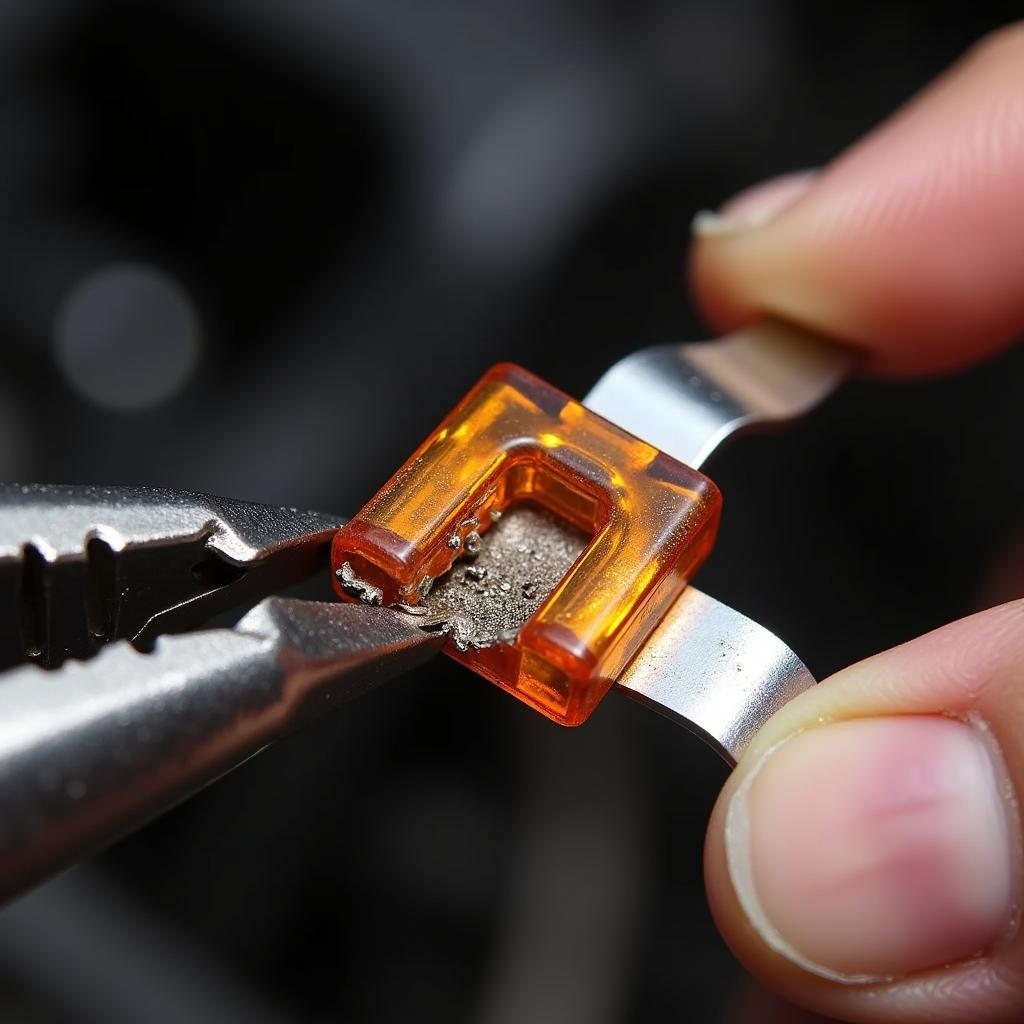If your 2007 Chevy Colorado 3.7L isn’t reminding you to buckle up with the usual chime and warning light, you’re not alone. This is a surprisingly common issue, and thankfully, it’s often a simple fix. This guide walks you through the most likely causes and provides DIY solutions to silence your Colorado’s seat belt warning buzzer (the right way!).
Understanding Your Seat Belt Warning System
Before we jump into troubleshooting, it’s helpful to understand how your Colorado’s seat belt warning system works. The system consists of several key components:
- Seat Belt Buckle Switch: This sensor, located within the buckle assembly, detects when the seat belt is fastened.
- Seat Belt Pretensioners: These devices tighten the seat belts in the event of a crash.
- Warning Buzzer and Light: These alert the driver and passengers to unbuckled seat belts.
- SRS Module (Airbag Control Unit): This unit receives signals from the buckle switch and, if necessary, triggers the warning buzzer and light.
Any malfunction within this chain of components can lead to a non-functioning seat belt warning system.
Common Causes of a Malfunctioning Seat Belt Buzzer
Here are the most common culprits behind a silent seat belt warning buzzer in a 2007 Colorado 3.7L:
- Faulty Seat Belt Buckle Switch: Over time, the buckle switch can wear out, get dirty, or fail completely.
- Wiring Issues: Damaged, loose, or corroded wiring connecting the buckle switch to the SRS module can interrupt the signal.
- Blown Fuse: The seat belt warning system, like many electrical components, has a dedicated fuse. If this fuse blows, the system won’t function.
- Malfunctioning SRS Module: In some cases, the SRS module itself may be faulty. This is less common but possible.
Troubleshooting Your 2007 Colorado’s Seat Belt Buzzer Issue
Follow these steps to diagnose and potentially fix the issue:
1. Check the Fuse:
- Locate the fuse box (refer to your owner’s manual for its location).
- Find the fuse related to the seat belt warning system or the SRS module (the diagram on the fuse box lid should identify it).
- Visually inspect the fuse for any signs of a break or burn.
- If in doubt, test the fuse with a multimeter or replace it with a new one of the same amperage.
 blown automotive fuse
blown automotive fuse
2. Inspect the Seat Belt Buckle Switch:
- Locate the buckle switch within the seat belt receiver.
- Check for any visible damage, debris, or corrosion.
- Use a multimeter to test the switch for continuity. Disconnect the battery’s negative terminal first for safety. If there’s no continuity when the buckle is fastened and unfastened, the switch likely needs replacement.
3. Examine the Wiring Harness:
- Visually inspect the wiring harness connecting the buckle switch to the SRS module for any signs of damage, looseness, or corrosion.
- Pay close attention to areas where the wiring might rub against sharp edges.
- If you find any damage, repair the wiring or replace the affected section.
4. Consult a Professional (SRS Module):
If you’ve ruled out the fuse, buckle switch, and wiring, the issue may lie with the SRS module. It’s best to leave SRS module diagnosis and repair to qualified technicians, as it involves complex electronics and safety-critical systems.
Remote Diagnostics and Software Solutions
In some cases, it may be possible to diagnose and even repair seat belt warning system issues remotely using advanced diagnostic tools and software. This can be a convenient and efficient option, especially if the problem lies in the software or programming of the SRS module.
“Remote diagnostics are becoming increasingly common in automotive repair,” says John Smith, Senior Automotive Engineer at XYZ Automotive Solutions. “We can often connect to a vehicle’s onboard computer system wirelessly, run diagnostics, and even reprogram certain modules – all without the vehicle ever entering a shop.”
When to Seek Professional Help
While basic troubleshooting is often possible at home, it’s important to remember that the seat belt warning system is a critical safety feature. If you’re uncomfortable working with electrical components or suspect a more complex issue, it’s always best to consult a qualified mechanic or dealership.
Conclusion
A malfunctioning seat belt warning buzzer in your 2007 Colorado 3.7L shouldn’t be ignored. By following these troubleshooting steps, you can often identify and resolve the issue yourself. However, don’t hesitate to seek professional help when needed. Remember, a functioning seat belt warning system is crucial for your safety and the safety of your passengers.
